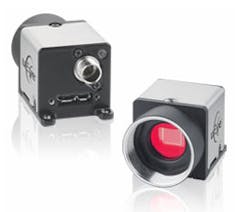White paper explores USB 3.0 interface
Among today's digital PC interfaces, USB is by far the most widely used. According to current sales statistics, more than 10 billion devices with a USB connection have been sold to date.
USB Version 1.0 was first introduced in 1996 but has been upgraded a number of times, most recently with "SuperSpeed USB" or USB 3.0 that offers faster data transfer than USB 2.0 while eliminating some of its hardware limitations.
To help system integrators in the vision industry, engineers at IDS Imaging Development Systems (Obersulm, Germany) have written a white paper that explores the objectives of the USB 3.0 standard, its data rate, backwards compatibility with USB 2.0 devices, power management, and protocol and hardware requirements.
Most importantly, the paper describes how USB 3.0 can be used as a camera interface to meet the data transfer needs imposed by the current generation of CMOS sensors with resolutions of 10 megapixels or more.
The new white paper, "USB 3.0: Background factors, new features and applicability as a camera interface,” can be found here.
-- by Dave Wilson, Senior Editor, Vision Systems Design
